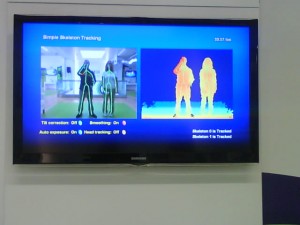When the word ‘promotion’ comes up in the context of retail stores, large signs or banners describing a firm’s next big deal comes to mind. “Get some gear! 40% of everything” or ” 2 for 1 on all merchandise” and the list goes on. When you go to the mall or shop online you’re often inundated with different sales and offers. So much so that it sometimes seems like some stores are having sales every day. These kind of promotions are aimed to get the most attention and hopefully drive the most traffic and as a result need to be as obvious as possible. But what if retail promotions were more covert? Instead of being open to everyone it becomes something that is found or stumbled upon?
At some restaurants you can find a ‘secret menu‘ where there are items that they don’t advertise but if you’re in the know will make for you anyways. Its a bit like a secret club where customers get something that publicly no body knows about and as a practice is something that ( to my knowledge) hasn’t been really explored in retail as much.
Recently I came across an unadvertised discount from the GAP that spurred my interest in secret promotions. Its since been taken down from this marginally legit sounding page. I had come across this link on a Reddit sub forum from someone who had came across it somewhere else. It asked for my cell number and in exchange sent me a discount code to be used at checkout. With some hesitance I tried it out as the site didn’t seem to have much relation to the GAP other than having its logo. Had I not trusted my source for the link I would have passed on it thinking it was a phishing attempt. It did end up working even though not even the employees had much of a clue about it having just come across it once before.
How is a promotion like this useful? Well in my case it gave me a feeling of exclusiveness (mouhaha! I’m one of the few!) and it brought me into a store I don’t often place at the top of my shopping list. With this promotion being so out of the ordinary it encouraged me to research further and with no promotion time span given it placed pressure on me to use this sooner rather than later.
Looking beyond myself as the customer, I estimate the benefits of this approach would be even further expanded when an influencer or content creator comes across this type of content. By seeing this ‘hidden’ content they have the ability to share and build further credibility with their audience. As a result I would presume a two fold result: this person would have a greater affinity for the company (Hey this company had awesome content that I could share with my following. I like them!) and there would be the seeding of this content to this person’s trusting followers who will be more likely to go through with a purchase.
So…. how is this type of promotion or even campaign implemented? That’s probably the harder part. Does the firm put up a site and just wait for people to come across it? Should content be seeded through chosen users or be placed on specific sites? As interesting as this idea is implementing it is the much more difficult part and needs to be explored further. But looking at this just as a concept there may be opportunity in this rather than continually building larger advertisements to get into the faces of the company’s potential customers.
As always feel free to contact me at either @kevrichard on twitter or kevin@kevrichard.com
*A note about this post. I’m not in anyway trying to say that lying or being not upfront with your customers can be used as a tactic. Obviously lying equals angry customers which goes on to decreased sales. I mean to discuss the use of content delivery strategies that are outside of a firm’s owned properties (website, Facebook page, store front).

